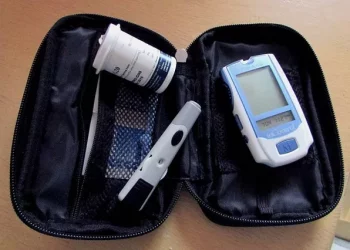Diabetes is a chronic condition that affects the body’s ability to regulate blood sugar levels. It can lead to a variety of complications if not properly managed, but with the right dietary choices, individuals with diabetes can significantly improve their blood sugar control and reduce the risk of long-term complications. One of the most important aspects of diabetes management is diet, as what a person eats directly impacts their blood glucose levels.
This article explores the importance of diet in managing diabetes and highlights some of the best foods for diabetics. We will discuss the principles of a diabetes-friendly diet, the types of foods to incorporate into your daily meals, and practical tips on how to make healthier food choices that can support optimal blood sugar management. Understanding how to make the right dietary choices can significantly improve the quality of life for individuals living with diabetes.
The Role of Diet in Diabetes Management
The relationship between food and blood sugar levels is fundamental for individuals with diabetes. When a person consumes food, it is broken down into glucose (sugar), which enters the bloodstream. The body uses insulin to help move glucose into cells, where it can be used for energy. However, in people with diabetes, the body either doesn’t produce enough insulin (type 1 diabetes) or doesn’t use insulin effectively (type 2 diabetes), leading to high levels of glucose in the blood.
A diabetes-friendly diet is designed to help manage blood sugar levels by focusing on foods that promote stable glucose levels. This involves:
Balancing Carbohydrates: Carbohydrates are the primary source of glucose in the body, and controlling carbohydrate intake is key to managing blood sugar levels. Carbohydrates come in two main forms: simple carbohydrates (sugars) and complex carbohydrates (starches and fiber). Simple carbohydrates cause rapid spikes in blood glucose, while complex carbohydrates are digested more slowly, providing a steady release of glucose into the bloodstream.
Focusing on Low Glycemic Index (GI) Foods: The glycemic index is a measure of how quickly a food raises blood sugar levels. Low GI foods are digested more slowly and cause a gradual increase in blood glucose, making them ideal choices for people with diabetes.
Incorporating Fiber: Fiber slows the absorption of sugar and helps to maintain stable blood sugar levels. Foods that are rich in fiber, particularly soluble fiber, can be beneficial for improving insulin sensitivity and reducing blood sugar spikes.
Including Healthy Fats: Healthy fats, such as those found in nuts, seeds, avocados, and olive oil, can help regulate blood sugar by improving insulin sensitivity and slowing down the absorption of carbohydrates.
Protein-Rich Foods: Protein does not significantly affect blood sugar levels and is important for overall health. Lean protein sources can help maintain muscle mass and prevent blood sugar fluctuations.
Best Foods for Diabetics
A well-balanced diabetes-friendly diet should focus on whole, unprocessed foods that are nutrient-dense and low in added sugars. Below is a list of some of the best foods for diabetics, categorized by food group.
1. Non-Starchy Vegetables
Non-starchy vegetables are an excellent choice for diabetics because they are low in carbohydrates, high in fiber, and rich in vitamins and minerals. They have a low glycemic index and are full of antioxidants, which help reduce inflammation and improve overall health.
Leafy Greens: Spinach, kale, collard greens, and swiss chard are low in calories and carbohydrates and rich in vitamins A, C, and K. These vegetables help to regulate blood sugar and provide important nutrients that support overall health.
Broccoli: A cruciferous vegetable that is high in fiber and antioxidants. Broccoli contains compounds that may help lower blood sugar levels and improve insulin sensitivity.
Cauliflower: Like broccoli, cauliflower is a low-carb, high-fiber vegetable that can be a great substitute for higher-carb foods like potatoes or rice in a diabetes-friendly diet.
Bell Peppers: Rich in vitamin C, bell peppers are low in calories and have a low glycemic index, making them an excellent food for people with diabetes.
2. Whole Grains
Whole grains are an important source of complex carbohydrates, which are digested more slowly than refined carbohydrates, preventing rapid spikes in blood sugar levels. They are also rich in fiber, vitamins, and minerals.
Oats: Oats are high in soluble fiber, which can help control blood sugar levels by slowing down the absorption of glucose. Steel-cut oats or old-fashioned oats are better choices than instant oatmeal, as they have a lower glycemic index.
Quinoa: A nutrient-dense grain that is high in fiber, protein, and essential minerals like magnesium and potassium. Quinoa is a great alternative to rice or pasta and has a low glycemic index.
Brown Rice: Unlike white rice, which is refined and high in glycemic index, brown rice retains its bran and germ, providing more fiber and nutrients. It has a slower impact on blood sugar levels.
Barley: High in both soluble and insoluble fiber, barley helps control blood sugar levels and improve insulin sensitivity. It can be added to soups, salads, or used as a side dish.
3. Lean Proteins
Protein is an essential nutrient that helps regulate blood sugar levels and supports overall health. Lean protein sources provide the necessary building blocks for muscle and tissue repair without adding excessive fat or calories.
Chicken and Turkey: Skinless, boneless chicken and turkey are excellent sources of lean protein. They can be baked, grilled, or sautéed and provide a great foundation for balanced meals.
Fish: Fatty fish like salmon, mackerel, and sardines are rich in omega-3 fatty acids, which can help reduce inflammation and improve heart health. These fish are also a great source of protein without raising blood sugar.
Tofu: A plant-based protein made from soybeans, tofu is an excellent option for vegetarians and vegans. It is low in carbohydrates and can be prepared in a variety of ways, including grilling, stir-frying, or adding to soups.
4. Legumes
Legumes are rich in fiber, protein, and complex carbohydrates. They are low in fat and have a low glycemic index, making them ideal for managing blood sugar levels. Incorporating more legumes into your diet can help improve insulin sensitivity and provide sustained energy throughout the day.
Lentils: Lentils are packed with fiber and protein, which help slow the absorption of glucose. They can be used in soups, stews, or salads, or made into a delicious lentil curry.
Chickpeas: Chickpeas, or garbanzo beans, are rich in fiber and protein and have a low glycemic index. They can be used in hummus, salads, or roasted as a crunchy snack.
Black Beans: High in both fiber and protein, black beans are a great option for managing blood sugar levels. They can be used in soups, tacos, or salads.
Kidney Beans: Kidney beans are a nutrient-dense legume that is high in fiber and protein. They can be added to chili, salads, or stews for a healthy, blood-sugar-friendly meal.
5. Healthy Fats
Healthy fats can help stabilize blood sugar levels by slowing the absorption of carbohydrates and improving insulin sensitivity. They also support heart health, which is particularly important for individuals with diabetes who are at higher risk of cardiovascular disease.
Avocados: Avocados are rich in monounsaturated fats, which are known to improve insulin sensitivity. They also provide fiber, potassium, and antioxidants, making them an excellent addition to a diabetes-friendly diet.
Nuts and Seeds: Almonds, walnuts, chia seeds, flaxseeds, and sunflower seeds are high in healthy fats, fiber, and protein. They help regulate blood sugar levels and can be enjoyed as a snack or added to smoothies, salads, or yogurt.
Olive Oil: Olive oil is a great source of monounsaturated fats and has anti-inflammatory properties. It can be used in salad dressings, cooking, or drizzling over vegetables to add flavor and promote stable blood sugar.
6. Dairy Alternatives
While traditional dairy products can sometimes cause blood sugar spikes, there are several alternatives that can provide the same benefits without the negative effects on glucose levels.
Unsweetened Almond Milk: Almond milk is a low-carb, low-calorie alternative to cow’s milk. It contains healthy fats and is a good source of vitamins and minerals like calcium and vitamin E.
Greek Yogurt: Greek yogurt is higher in protein and lower in sugar compared to regular yogurt. It is an excellent choice for diabetics when consumed in moderation, especially if it is unsweetened.
Coconut Milk: Coconut milk is another low-carb dairy alternative that can be used in smoothies, curries, or as a milk substitute in baking. It is rich in healthy fats and antioxidants.
7. Berries
Berries, such as strawberries, blueberries, raspberries, and blackberries, are rich in antioxidants and have a relatively low glycemic index. They are high in fiber and contain natural sugars that do not cause significant spikes in blood glucose levels. Berries can be enjoyed as a snack, added to yogurt, or used in smoothies.
Strawberries: High in vitamin C, strawberries are rich in antioxidants that help protect against oxidative stress, which can contribute to complications in diabetes.
Blueberries: Blueberries are packed with anthocyanins, which have been shown to improve insulin sensitivity and reduce inflammation.
Raspberries: Raspberries are high in fiber and vitamin C, making them an excellent choice for blood sugar control and overall health.
Practical Tips for Incorporating Diabetes-Friendly Foods into Your Diet
Plan Meals in Advance: Planning your meals in advance can help you make healthier choices and ensure that you are incorporating the right balance of nutrients.
Portion Control: Even healthy foods can contribute to blood sugar spikes if consumed in large quantities. Use portion control to ensure you’re eating the right amounts of carbohydrates, protein, and fats.
Avoid Processed Foods: Minimize the consumption of processed and refined foods, such as sugary snacks, baked goods, and fast food. These foods can cause rapid increases in blood glucose and provide little nutritional value.
Stay Hydrated: Drink plenty of water throughout the day to support overall health and help regulate blood sugar levels. Avoid sugary drinks like soda and fruit juices, as they can cause blood sugar spikes.
Conclusion
A well-balanced, diabetes-friendly diet is a crucial component of managing blood sugar levels and preventing complications associated with diabetes. By focusing on whole, nutrient-dense foods that are low in refined carbohydrates and high in fiber, protein, and healthy fats, individuals with diabetes can effectively control their blood glucose levels and improve their quality of life.
Incorporating non-starchy vegetables, whole grains, lean proteins, legumes, healthy fats, dairy alternatives, and berries into your diet can help maintain stable blood sugar levels and promote overall health. It is essential to work with a healthcare provider or registered dietitian to develop a personalized eating plan that fits your unique needs and lifestyle.
With the right diet and lifestyle choices, diabetes management becomes more manageable, and individuals can live healthier, more fulfilling lives.
Related topics:
What Causes Sugar to Drop After Eating?

























